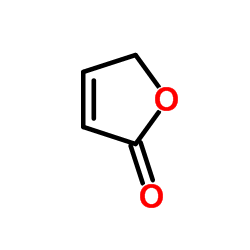The butenolide signaling molecules SRB1 and SRB2 induce lankacidin and lankamycin production in Streptomyces rochei.
Kenji Arakawa, Naoto Tsuda, Akihiro Taniguchi, Haruyasu Kinashi
Index: ChemBioChem. 13(10) , 1447-57, (2012)
Full Text: HTML
Abstract
New signaling molecules that induce lankacidin and lankamycin production in Streptomyces rochei were extracted from the culture filtrate and purified by Sephadex LH20 and silica gel chromatography with the help of bioassay. Chiral HPLC and ESI-MS analyses indicated the presence of two active components--SRB1 and SRB2--and their molecular formulas were established to be C15H24O5 and C16H26O5, respectively. By extensive NMR analysis, SRB1 and SRB2 were determined to be 2-(1'-hydroxy-6'-oxo-8'-methylnonyl)-3-methyl-4-hydroxybut-2-en-1,4-olide and 2-(1'-hydroxy-6'-oxo-8'-methyldecyl)-3-methyl-4-hydroxybut-2-en-1,4-olide, respectively. These structures were finally confirmed by chemical synthesis and the absolute configuration at C-1' was determined to be R in each case. The synthetic 1'R isomers induced production of lankacidin and lankamycin at around 40 nM concentrations. SRB1 and SRB2 are therefore distinct from the well-known 2,3-disubstituted γ-butyrolactone molecules such as A-factor, virginia butanolide, and SCB1 and and belong, like avenolide, recently isolated from Streptomyces avermitilis, to the γ-butenolide family.Copyright © 2012 WILEY-VCH Verlag GmbH & Co. KGaA, Weinheim.
Related Compounds
| Structure | Name/CAS No. | Molecular Formula | Articles |
|---|---|---|---|
 |
2(5H)-Furanone
CAS:497-23-4 |
C4H4O2 |
|
Comparative safety of the antifouling compound butenolide an...
2014-04-01 [Aquat. Toxicol. 149 , 116-25, (2014)] |
|
Proteomic changes in brain tissues of marine medaka (Oryzias...
2014-12-01 [Aquat. Toxicol. 157 , 47-56, (2014)] |
|
Alpha, beta-unsaturated lactones 2-furanone and 2-pyrone ind...
2013-09-12 [Toxicol. Lett. 222(1) , 64-71, (2013)] |
|
Acute toxicity of the antifouling compound butenolide in non...
2011-01-01 [PLoS ONE 6(8) , e23803, (2011)] |
|
A protocol for an asymmetric synthesis of γ-amino acids.
2012-07-20 [J. Org. Chem. 77(14) , 6296-301, (2012)] |